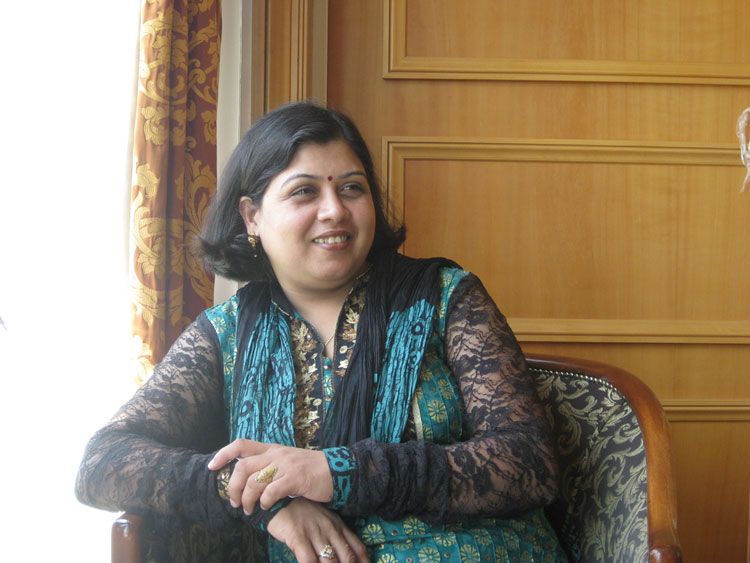 Elon Musks company SpaceX and Jeff Bezoss Blue Origins have grabbed the headlines in the space race, both of them building rockets and spacecraft. But there is fascinating backstory on how this race and the private space industry came into existence. It is the tale of a renegade entrepreneur, Peter Diamandis, who founded the XPRIZE foundation to incentivize the building of the rocketsin order to find a way into space himself.
Elon Musks company SpaceX and Jeff Bezoss Blue Origins have grabbed the headlines in the space race, both of them building rockets and spacecraft. But there is fascinating backstory on how this race and the private space industry came into existence. It is the tale of a renegade entrepreneur, Peter Diamandis, who founded the XPRIZE foundation to incentivize the building of the rocketsin order to find a way into space himself.
The story is told in a new book, How to Make A Spaceship: A Band of Renegades, An Epic Race, and the Birth of Private Spaceflight (Penguin Sept. 20, 2016), by journalist Julian Guthrie. Its a book that reads like a thriller, and it reveals many secrets. In 2011, Diamandis recruited me to be head of academics at a futuristic think tank, Singularity University, that he and Ray Kurzweil had founded. I am in awe of him and have a bias. Nonetheless, I have no doubt that the lessons in the book will resonate with todays entrepreneurs, engineers, and adventurers, because they illustrate how the impossible can be made possible. And shopping, in a few years’ time, for spaceflight tickets without understanding the background of the private space race is like carrying an iPhone without knowing it started with a desktop computeror flying in a plane and having no awareness that it started with the Wright Flyer in 1903.
As Guthrie narrates the story and as I have heard from Peter Diamandis on several occasions, it all started with Apollo 11’s landing on the Moon, in July, 1969. Watching this, Diamandis became determined to fly into space himself and organized his life around that dream. He completed two degrees from MIT and a medical degree from Harvardin order not to practice medicine but to enhance his chances of getting into the Astronaut Corps. Then he founded a national student space club that Jeff Bezos was chapter head of at Princeton; an international space university; and a rocket company. When NASA began to wind down manned space flight, Diamandis realized the government wouldnt get him where he wanted to go and he would have to do it on his own.
He found his inspiration for a modern-day space race in an unlikely place: in the golden age of aviation, in a $25,000 prize offered by French hotelier Raymond Orteig to the first person to fly non-stop between New York and Paris. Several unsuccessful attempts had been made before an American airmail pilot named Charles Lindbergh had won the competition in 1927 with his plane, the Spirit of St. Louis, galvanizing creation of the commercial airline industry. Nine teams competed for the $25,000. Between them, they spent around $400,000sixteen times the value of the cash prize. Peter marveled: Orteig didnt spend one cent backing the losers. By using incentives, he automatically backed the winner great return on his money.
In May 1996, Diamandis launched a $10 million prize for the first nongovernmental team to build and fly a manned rocket to space twice within two weeks. When he announced the prize, tentatively titled the XPRIZE, he didnt have the money. He did what entrepreneurs do: make big promises with the hope that all would work out. It took him years to raise the money and it came from the most unlikely or sources: an Iranian woman, Anousheh Ansari, who had just sold her company and shared his dream of going into space.
When the XPRIZE was announced, only the worldslargestthree governmentsthose ofthe U.S., Russia, and Chinahad launched men into space. The XPRIZE soon had 24 teams from more than a dozen countries competing. Across the globe, engineering students scraped together money and resources to try to build a manned space program. Space scientists ignored ribbing from colleagues who said the dream of private space was impossible. Retirees working in rice fields in Texas built engines and rockets. A famous programmer named John Carmack (now C.T.O. of Oculus Rift) decided to try to do for aerospace what he had done for video games.
And in the Mojave Desert, an airplane designer named Burt Rutan, who had secretly attracted funding from a billionaireMicrosoft co-founder Paul Allenbegan his covert space program. He had fewer than 30 engineers working on the spaceship. As with breakthroughs that came later with the Internet, personal computers, and smart phoneswherein failures were expected and iterations were the normRutan had begun with foam models thrown off the Mojave tower, created on the basis of doodles on a napkin. With every new type of plane, Burt plotted and planned and worked out hundreds of details in his mind before testing anything in a computer. There was never an epiphany, a single aha moment; only iteration after iteration, layer after layer. How these foam models led to the worlds first private spaceship, SpaceShipOne, is one of the great entrepreneurial adventure stories of our time.
Burt Rutan won the $10 million XPRIZE in 2004. Richard Branson bought the rights to the technology and is developing SpaceShipTwo, to fly paying passengers to the edge of space. Elon Musk, who met Peter in the spring of 2001 and was inspired by the XPRIZE, has hit one milestone after another and hopes to take NASA astronauts to space beginning next year. Jeff Bezos, who met with Peter in the early days of the XPRIZE, is also making history with his own suborbital spacecraft.
The story sounds incredible: from the pages of science fiction. And it has a happy ending. But as all entrepreneurial ventures go, nothing went according to plan: It was riddled with failure and disappointment, ugly battles broke out between friends and founders, the world often looked like it was coming to an end, and Diamandis had to gamble everything he had. Most interesting was an observation that Richard Branson made in the books foreword: there isnt much of a difference between being an adventurer and an entrepreneur. As an entrepreneur, you push the limits and try to protect the downside. As an adventurer, you push the limits, and protect the downsidewhich can be your life.
| About Author | |

|
Vivek Wadhwa is Vice President of Innovation and Research at Singularity University; Fellow, Arthur & Toni Rembe Rock Center for Corporate Governance, Stanford University; Director of Research at the Center for Entrepreneurship and Research Commercialization at the Pratt School of Engineering, Duke University; and distinguished visiting scholar, Halle Institute of Global Learning, Emory University. He is author of ”The Immigrant Exodus: Why America Is Losing the Global Race to Capture Entrepreneurial Talent”–which was named by The Economist as a Book of the Year of 2012. Wadhwa oversees the academic programs at Singularity University, which educates a select group of leaders about the exponentially growing technologies that are soon going to change our world. These advances—in fields such as robotics, A.I., computing, synthetic biology, 3D printing, medicine, and nanomaterials—are making it possible for small teams to do what was once possible only for governments and large corporations to do: solve the grand challenges in education, water, food, shelter, health, and security. |
Website: http://wadhwa.com/2016/09/19/the-renegade-who-dreamed-of-going-into-space-and-started-a-race/
Disclaimer: Please use this channel at your own discretion. These articles are contributed by our users. We are not responsible or liable for any problems related to the utilization of information of these articles.











